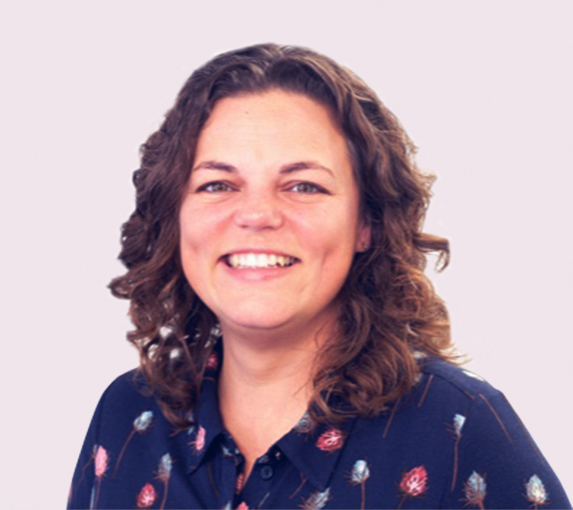
Episode 16: Pods, rows and columns - or who cares?
Hologram teachers, behavioural issues and more. In this episode Andy, Emily and Adam discuss the best ways to organise pupils. Is facing each other a problem? What happens in a class with no tables? Plus, advice on organising a new class of students for a newly qualified teacher.
More Podcasts on Education
Continue listening to our educational experts
Meet your instructors
The school of school podcast is presented by:

Andy Psarianos
@andy_psarianos

Emily Guille-Marrett
@EmilyEatsBooks

Adam Gifford
Never miss an episode
Subscribe to get the latest The School of School podcasts delivered to your inbox.
Podcast Transcription
Andy Psarianos
Hi, I'm Andy Psarianos.
Emily Guille-Marrett
Hello! I'm Emily Gullie-Marrett.
Adam Gifford
Hi, I'm Adam Gifford.
Introduction
This is the School of School podcast. Welcome to the School of School podcast.
Adam Gifford
Welcome to this episode of School of Schools. And this one is going to take a lot of us back to the first days of teaching. One of the most exciting moments ever is when you get your first class and you spend days and days over the summer holidays organizing and reorganizing seating. So, the question is, do we want our children in pods? Do we want them in rows? Do we want them in columns? We've all invested hundreds of hours, shuffling seats and tables.
So, what's the story? You two have both been to school. You must have memories. If there's anything like mine, getting vaguer as time marches on. But, you must have memories of how you sat. And so, what are your thoughts? What are your thoughts? You've both got children as well. What are your thoughts on this?
Andy Psarianos
So I guess I'm old enough, I'm trying to imagine. I'm trying to look back. I think every classroom, except for maybe kindergarten was rows and columns. I think year one grade one in Canada, right? Grade one was rows and columns. This is your desk your equidistant front, back equidistant, left, right. And that's it. And that's where you sit. And also, my memory was that, largely, and I don't remember if this was true all the way through school, I don't have that great of a memory for when I was really small. You kind of chose where you sat in the first day of school, you kind of walked in and sat down at a desk and that's where you sat for the rest of the year. And all the naughty kids went to the back and all the really keen, clever kids went to the front. And that's my memory of school. Right? What about you guys?
Emily Guille-Marrett
I'm just, I don't know why, but I've gone to the desk, the old fashioned desk that you used to lift up, and put all your stuff in it. But yeah, that was definitely in rows. And I remember people being quite possessive of their desk. I love thinking about the opposite. So the complete opposite of the spaces that I loved at school, which were totally different, were going to be the art block, like when you did your music classes and when you did drama And much later on in secondary school, which is hilarious, now I look back when I did IT, which was called ICT Information Communications Technology. And that was a big deal. And we had our computers and we learned what electronic mail was and things like that, those spaces I really liked and they were different. But, everything else was, as you was describing it quite, quite formal.
Adam Gifford
So I have quite strong memories of my, certainly, my primary school where I've got two. Yeah. The two strongest memories have just come flooding back since we started talking about this, is that there were rows and columns for the majority of classes in my primary school, except for two year groups. And when I look back now, when I was just speaking about my primary school teachers, just the other day, these two primary school teachers who had groups, would've been considered the artsy teachers at the time, they would've been considered a bit left field. They were the ones that went from New Zealand and went away on safari to like Africa and places like that, which was a big deal in the seventies, right? This was huge and I'd bring back presents for the children and all that sort of stuff.
And then I had, I remember one class where it was rows. But, the flip side of the kind of warm, fuzzy feeling I felt in one classroom is directly contradicted by another classroom where people were in row. But what I remember is it was a strange, it must have been a small number of children in my class because it was like one row that went around the perimeter. We can't really have a row that goes into the perimeter, but it was one single row of desks that, so you sat opposite someone on the far side of the classroom. And I will never forget. I mean, this guy, wasn't a great teacher to be fair. And, and I'd say that with, with absolute conviction. He was a very aggressive, not a very nice man. But, but one thing I, I realized was that I looked opposite. And when he asked questions, there were some people that had panic on their faces because they couldn't look or talk to anyone else. And they felt totally isolated. That was the impression I got as a child.
So I think that looking at those two dynamics as creating really strong memories for me, I think there must be an element of truth now, because that's what I felt as a child. So like you are saying about the group work and some things that you do in the way that some classrooms are set up Emily and the way that we know how that can help us or, or at least give us that sense of difference. Then I think the same has to be true now as it was in the early and through to the late seventies, when I was a kid really aware of the different dynamics in the classroom. And that was based in my eyes as a five to 10 year old on the seating arrangements in the classroom.
Emily Guille-Marrett
The one you, as you were saying that you were making me think the other space that I have fond memories of is actually, I don't know how many people remember their nursery, but I really remember my nursery with Mrs. Kay and the people that worked there. The different spaces in there , that were created for us. And the sink where you'd wash the paint pots was like exciting, like the reading area, which was like pulled back and it had loads of books in it and the different spaces that were always being used for like cutting and pasting and all the different stuff. It's a very different environment. But I remember that very fondly indeed.
But I think it's interesting because I was also hearing about what you were saying and the different, like this then takes me back to something that I saw on Twitter recently about the purpose of the classroom. Because it, how it's laid out and actually a kid is clear about where they need to go, what they need to do. Like you only have long in a classroom to deliver the teaching and learning. Is it clear? Does everybody know what they have to do? Or are you wasting 10 to 15 minutes where it's all a bit unclear and who's going to sit where, and I think that's quite interesting that how the space can be threatening potentially like Adam, or like confusing or exposing or functional or useful.
It is really important. One wonders if we give enough time. On the flip side, some people, you hear say there's too much dizziness in, like too many creative things, too much stuff hanging, not enough time focusing on what needs to be there, but should be on the walls, where the kids should be sat. So it's interesting.
Andy Psarianos
So would you say it matters?
Adam Gifford
I think it does. And I think where it matters, I'm just thinking about this now. Cause there's another option. I went into a school once I was doing some training in a school. So at this stage I'd had, I don't know, maybe I had 17 or 18 years experience as a teacher and as a senior leader in school. So I felt pretty comfortable in the classroom. And I remember saying as part of the training, "Oh, you just put the books on the tables". And the response was, "We don't have tables" and I, that sort of, "Sorry". Double take, "What do you mean? You don't have tables?" "We only have tables in year six". So I said, "Look, I'm desperate now. Can you just, can we just pause training said, can you show me some of your classrooms? Cause I'm really intrigued as to a why this decision's been made?".
But the one thing it did do is I realized that if they asked me to teach there the following day, I would feel out of my depth. And so I actually think that it's not just about how we organize the children, but perhaps also our expertise and how we manage that organization and configuration.
One of the easiest things in terms of behavior management, stick everyone sitting by themselves, with a gap in between all facing the front. It's really easy to manage behavior, if behavior's just seen as compliance and everyone being quiet and staring at you. And you're the focal point all the way through to this sort of freestyle classroom. I'm not trying a disservice when I say that because it literally was quite freestyle in one sense, and that the children got to choose where they work. They could work lying down, they could kind all of these things. But, what I realized in that was that is a different skill set and a different level of expertise that's needed in order to, I guess, get the best out of that situation and environment.
So I think it's not just the impact on the children, but also whether or not, we as educators are able to manage it well, to ensure that that sort of maximum learning and, really getting the full potential out of it.
Andy Psarianos
Yeah. Like this idea of the teacher as a manager, right? Like that's an interesting idea. Right? So if you look at it from a business point of view. If you said in a business, how do you organize things? And there would be just as many points of view as there are regarding class rooms. Right? But I suppose the heart of the question, what we need to get to is, is it important? Is it important? I think we're all agreed that it's important. Do we know enough about, as a teacher, do you know enough about it? Like about what the impact is of either putting kids in columns and rows versus putting them in pods versus letting them not having any tables and letting them sit wherever they want. Do you understand what the impact of that is to your classroom? And can you manage that situation? Right. That's an interesting question, right?
Emily Guille-Marrett
I'm trying to think about young kids when they're trying to write. And I'd say maybe this is a bit controversial, but I think if you are kind of learning how you sit and how you position yourself and having those core muscles and the ability to, hold the pen.
Adam, you are laughing at me.
Adam Gifford
I'm not laughing. But I think that what I think that what's happened is that, the no tables has kind of thrown you, right?
Emily Guille-Marrett
Yeah. Because I'm like, who was that for?
Adam Gifford
Well, they'd argue it's for the children. They'd have to, there's no other question. We all would argue that if I put people in lines and row in my head, my motivation might be because that's the easiest way for me to control behavior. And if I can't control behavior, everyone loses. There's less disruption in the class.
Emily Guille-Marrett
And can the children choose to sit at a table?
Adam Gifford
I'm just trying to think. I think they had like benches and they had clipboards and so they had hard surfaces and those sorts of things. But it, it certainly was, it was more freestyle. But I think, I just think at the heart of all of this is like you're saying Andy is, and is probably a topic we've touched on in other podcasts, is whether we're evaluating the impact of these things.
Like you said, how do we know that this is the right thing to do? And, in my classroom they might be in rows and in your classroom, they might be in groups and in this classroom they might not have tables. How do we evaluate the impact of that? Now, I'm sure that if we look there's research, that will point in different directions. But equally we've seen research as mentioned in another podcast about learning styles, which is now, it certainly doesn't have the same, I would argue, relevance to organizing learning today as it did when I first came out to the UK 15 years ago.
Emily Guille-Marrett
Yeah. Some people would go as far as to say nonsense, it's been completely disproven nonsense just to be really controversial for those don't love it.
Adam Gifford
But I think this is the thing. I think that this is what it comes back to, is that, are we too willing? You know, are we asking the right questions? Are we able to evaluate these things? And do we have the skill-set to know whether or not, if I whipped out all the tables in my classroom, that the children will get a better deal. Because if we don't, then I don't know. It's maybe it's a dangerous predicament.
Andy Psarianos
Yeah. And sometimes, we put artificial some kind of artificial morality on certain things, right? Like we start talking about equity and about fairness and all these kinds of things. And they get in the way sometimes of hard nose realities. So, there're certain facts and things that you need to deal with. If you've got a classroom where anything goes, and you're trying to teach in your classroom, you've got kids who are autistic. I mean, all hell's going to break loose. These kids are going to have breakdowns. They're going to have meltdowns all the time, because what they need more than anything is predictability and structure.
If you've ever worked with children like this, you'll know. Like there're some kids, if you say, "Okay, kids off to you now five minutes". And you stop them after four minutes, they'll have a meltdown because the minute you say five minutes, they'll look at the clock. And they'll say, "It's two minutes, past 10. That means at seven minutes past 10, we are going to stop". And if you stop or earlier or later, that's meltdown territory. Right. So kids like that, they're not going to do very well if you're saying, "Hey, do whatever you want in the class". There's no, it's all free wheeling, all that kind of stuff. Right.
But then you've got other kids who, if you try to put them in rows and columns, maybe they're, they have different types of challenges. You know, everyone's got challenges. When I, not say challenges, I don't mean this in a kind of like derogatory sense. Like I have lots of challenges. You know, we all do. It's that self-awareness thing again. Some kids they're just not going to cope sitting at a desk. This is my there's like a three feet on each side perimeter. Right. Of where I sit, that's a zone that I'm not allowed to get out of. This is my zone. I'm not allowed out of this. Some kids can't work in that environment. Right. So, there's lots of factors.
Emily Guille-Marrett
Do you remember Estelle Morris, education secretary? Many many, quite a while back now, but I remember seeing her talking at a vet conference and she presented a video, you of the classroom, of the future, the potentially. It was like proper future thinking imagining. And I remember thinking, it's quite amusing to see things like that, because there's some stuff there that you're just like, you're right. That's just, even in your wildest dreams, like that's never going to happen.
But, it is quite interesting to think about, to play with those ideas. And, I'm not sure about hologram teachers. But, it's just those sorts of things like the school environment, the spaces. Like, and actually will. Let's think about the impact of COVID and lockdown, who would've thought like the school environment for a good few months was not the school environment for many, the learning environment for many. And it got turned on its head overnight. And it's, that is interesting. And the impact that will have on what the classroom will look like, both the collaborative work, independent work and teaching. Will we have these big buildings? Do they need to be like that, that everyone sits in for a certain number of hours and behaves in a particular way? So, yeah, it's interesting.
Adam Gifford
One thing I will do is provide a comparison though. So, if you were teaching in groups for many, many, and then through COVID protocols, they needed to be in rows or face all faced in the same way and those sorts of things, I suppose, that'll provide a comparison.
I just keep coming back to that I think a lot of seating arrangement is often determined because of behavior. And that's a different issue like behavioral, but get sorting behavior in your classroom is like sorting behavior anywhere. It comes down to relationships. It's a completely different subject. It's another episode. But I think that when that happens, I'm not convinced that. Behavior's important, right? It's very difficult to learn when you've got bad behavior in the classroom. It's that simple.
Adam Gifford
But if we assume that we want to make decisions, do we want to make, or decisions for the children? Are we making the decisions on behavior? Are we making decisions because it's the best for the tasks that are being performed in the classroom? Are we just making those decisions on children's learning alone. And I'd say, that the majority of people that I've spoken to when I see them, after school, quarter to four rearranging desks, often the reason for that is behavioral.
Andy Psarianos
Let me frame a question, a newly qualified teacher going in to teach, and the choice is theirs, how they organize the classroom and you guys have experience, right. And you understand what the factors are. What do you say to them?
Adam Gifford
I've been in this position like loads of times, it's theirs. And, and I think that they'll just have to own it because it's there. As soon as you start making those decisions, it impacts on relationships with the children. And that's what it comes down to. That's what I think the best teachers have got is, they've got special relationships with the whole class and as individuals in classrooms. And I think that they have to, they have to own that.
I think just to finish off on me, I think the only thing is that we've got to accept that it's a skill set as well. And that it's a learned skill set. And when we come into classrooms or organizations, I'm sure it's the same in businesses that when we make these decisions about how people interacting with each other, and when we choose to limit or increase the opportunities for that happen by the way of seating arrangements or your classroom arrangements, is that we must also have the associated skills to be able to manage that different dynamic.
And if we don't put your hand up and ask for help, because there's nothing worse and going, "Oh yeah, we're going freestyle, big group, all of this" and then go, "Oh, I'm drowning. This is awful. But everyone said, go groups, go groups". Yeah. Yeah, yeah. I, yeah. So I think that's the only thing from me.
Emily Guille-Marrett
I just feel strongly that people are, good teachers are professional. I think there is a reality as well that we haven't talked about is what the school leadership is. Like there might be, you can have all the ideas that you've got, but, there is a side that we haven't touched on. But what the school leadership direction is and what it is required.
I think you are absolutely right, Adam. Environment where the kids have come from? What their prior experiences? Which age group you're teaching? Are they coming in? And you've got to set it up for the rest of the school. Like when you're coming into the foundation, the reception year, and then going into key stage one, you're kind of setting the foundation for then going into key stage two. And everyone has an expectation that you are going to have done a good job so that when they get into year five or they know what's coming, or the going into senior school.
At the end of the day, the children have only got so many hours in school. And for all the brilliant ideas and stuff that everyone says, it's got to be clear. They've got to know where they've got to go. They've got to know what they've got to do. And there has to be learning, taking place. That's just for me, so important. Because some of kids, you don't get a second chance and this is it. So.
Andy Psarianos
Okay. We need to wrap this up guys. I think that was fun. Thanks for joining us, everyone. Hopefully. You'll join us for the next episode.
Closing
Thank you. Joining us on the School of School podcast
More Podcasts on Education
Continue listening to our educational experts
